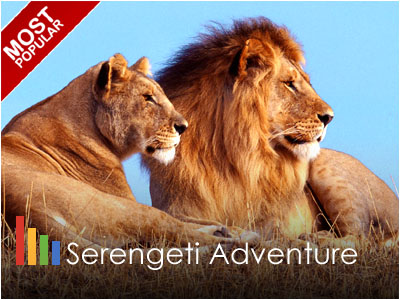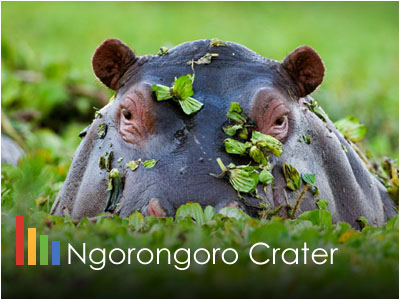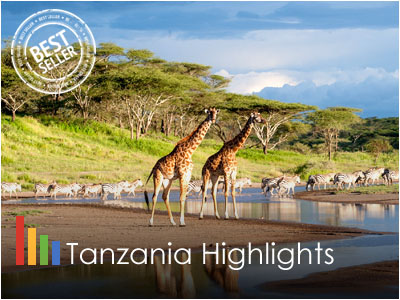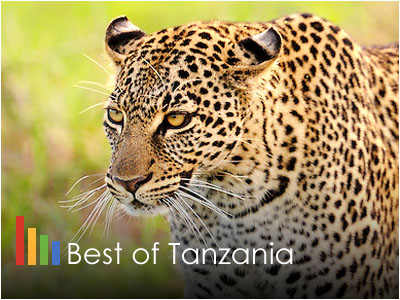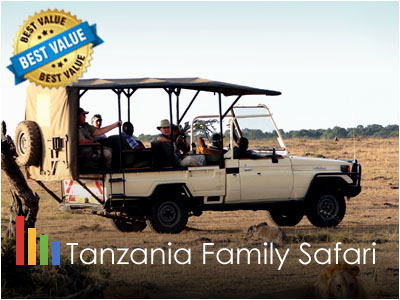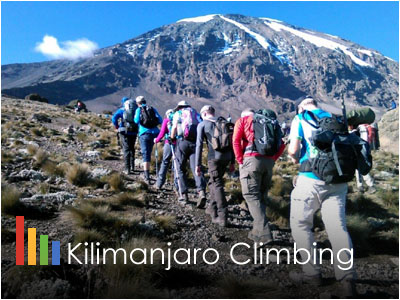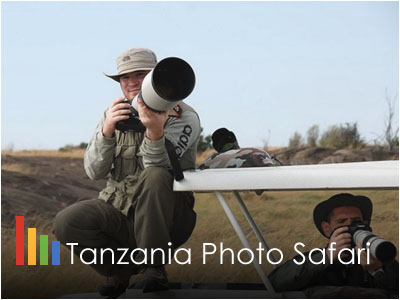Selous Game Reserve, Tanzania, Africa
Selous Game Reserve - Tanzania, Africa
Located in southern Tanzania and far from the madding crowds, the Selous Game Reserve is Africa's largest game reserve and one of our favourite wildlife viewing areas. Covering over 45,000km² of wilderness, with grassy plains, open woodland, mountains and forests, the Selous Game Reserve (pronounced 'seloo', and named after the great explorer and hunter, Frederick Courtney Selous) is Africa's largest game reserve and is relatively undisturbed by human impact. It's about three times the size of South Africa's Kruger National Park, and twice the size of the Serengeti National Park. In a fitting tribute, it is also one of Tanzania's three World Heritage Sites. This really is a hidden gem! The rivers and lakes of the Selous are the lifeblood of a park that hosts some fabulous game, including elephant, wild dog, buffalo, hippo, crocodile and fantastic prides of lion.
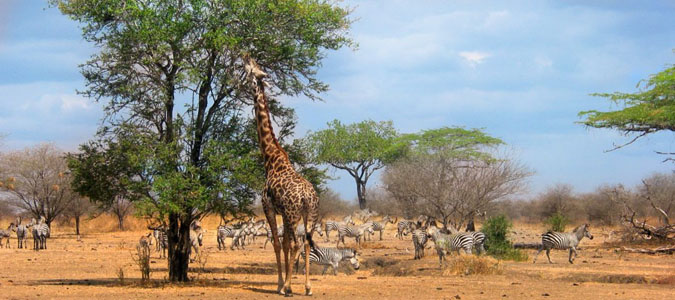
Basic Facts - Selous Game Reserve
Selous Game Reserve is Africa's largest game reserve and one of favourite game viewing areas in Africa. Covering over 45,000 square kilometres, is amongst the largest protected areas in Africa. Africa’s largest and oldest game reserve is one of its most scenic wildlife destinations; the Selous is utterly beautiful. The beauty of the park is matched by the quality of a safari here; boating, walking and fly camping compliment standard game driving in thriving wildlife areas. This is an outrageously good safari park and an essential component of any southern circuit itinerary. The Selous is a superb safari destination for both family safaris and African honeymoons, all the better for the ease of getting there and the lack of crowds. The park has the widest diversity of safari activities in the country, offering the boating safaris as well as standard game drives, walking safaris and legendary fly camping trips.
More About Selous Game Reserve
Selous is named in honour of the Englishman Frederick Courtney Selous, who lived and hunted in the region from 1871 for around forty years. He gained the reputation as the most accomplished hunter of his age and was also known for his writing, most notably he was the author of ‘A Hunter’s Wanderings in Africa’. Selous was the right-hand man to Cecil John Rhodes in his campaign to annex present-day Zimbabwe to the British Empire, he also achieved brief notoriety in 1899 for speaking out against England’s war on the Boer Republics of South Africa. When the First World War broke out Selous, at the age of 60, was made Captain of the 25th Royal Fusiliers, winning a DSO in 1916. With his detailed knowledge of the bush, Selous led the chase after the German guerrilla army that presided in southern Tanzania.
On New Year’s Day in 1917, Selous was shot dead by a sniper close to the banks of the Beho Beho River where he remains buried today, near Beho Beho Safari Camp. Five years after Frederick Courtney Selous’ death, the British colonists incorporated a number of existing game reserves south of the river to extend the plains of the aptly named Selous. The Game Reserve reached its present size and shape in the 1940s, when the colonial government moved the remaining tribes out of the area to combat a sleeping sickness epidemic. It was inscribed as a UNESCO World Heritage Site in 1982.
The Selous Game Reserve is a protected area in southern Tanzania. It covers a total area of over 45,000 km2 (18,000 sq mi) and has additional buffer zones. It was designated a UNESCO World Heritage Site in 1982 due to its wildlife diversity and undisturbed nature. Some of the typical wildlife of the miombo inhabits the reserve, such as African bush elephant, black rhino, hippopotamus, lion, East African wild dog, Cape buffaloes, Masai giraffe, Plains zebra, and Nile crocodile. Permanent human habitation is not permitted within the reserve. All human entry and exit is controlled by the Wildlife Division of the Tanzanian Ministry of Natural Resources and Tourism. For more information regarding tours and safaris to Selous Game Reserve, please DO NOT hesitate to Contact Us.
The prodigiously large mammal populations found here, support the claim that the Selous is the greatest surviving African wilderness. Buffalo numbers are estimated at 120,000–150,000, and the reserve’s 40,000 hippo and 4,000 lion are probably the largest such populations on the continent. The Selous also harbors an estimated 100,000 wildebeest, 35,000 zebra, 25,000 impala and significant herds of giraffe, greater kudu, waterbuck, bushbuck, Lichtenstein's hartebeest and eland. It is also one of the most important sanctuaries in Africa for the endangered African wild dog, sable and puku antelope. There are also huge populations of crocodile, hippo, spotted hyena and leopard to name just a few of the big game species found here. Historically Selous has been home to a large proportion of Tanzania’s elephants population, but unfortunately there has been a marked increase in poaching over recent years and elephant numbers are now much lower than they once were. .
More than 440 bird species have been recorded in the Selous. On the lakes you'll find pink-backed pelicans, African skimmers and giant kingfishers. The sandbanks are home to carmine and white-fronted bee-eater colonies whilst pairs of fish eagle, palmnut vulture, ibises and palm swifts nest in the borassus palms. Other waterbirds found in the Selous include: yellow-billed stork, white-crowned and spur-winged plovers, various small waders, pied and malachite kingfishers. Pairs of trumpeter hornbill and purple-crested turaco can also be seen between the riparian trees. Also worth looking out for among a catalogue of egrets and herons is the Malagasy squacco heron, a regular winter visitor, while the elusive Pel’s fishing owl often emerges at dusk to hawk above the water.
Selous is a classic dry season park, with the game getting progressively better the later in the season you travel. July to October is the best time of year for the greatest overall concentrations of game, but do not underestimate this park at any other time; game viewing is very good in various areas throughout the year. During January and February you do need to choose your camp very carefully as the game migrates away to more fertile feeding grounds. Birding at this time of year is absolutely world class.
The Selous is home to three of the finest camps in Tanzania, a couple of which would stake their claim as the best in all of Africa. Beho Beho and Sand Rivers are exceptional lodges that offer all the activities for which the Selous is famous, and host some excellent guiding teams. Siwandu (formerly Selous Safari Camp) is a fabulous tented camp in arguably the best game area of the park at a price that makes it one of the best value camps in Africa. Close by to Siwandu is the no-frills Lake Manze, a great little adventurous camp which has a reputation for being on an elephant highway. A little further away, Manze's sister camp Impala offers a higher level of luxury at a still-affordable price. Other camps in the park include Rufiji River Camp, Speak to us for more information. Getting to the Selous is easy, it is served by light aircraft flights from Dar and Ruaha daily – a flight takes about 45 minutes from Dar, and about 90 minutes from Ruaha.
AfriChoice operates a wide range of carefully designed tours and safaris to Selous Game Reserve by providing transport and booking a hotel for you. Our safari consultants will always be at your assistance should you need a tailor-made holiday to this unique destination. NB: For more information regarding Selous Game Reserve, DO NOT hesitate to Contact Us.
Contact Us for more information:
Tanzania Popular Wildlife Safaris
-
Serengeti Safari Adventure
Serengeti 3 Days Safari
-
Ngorongoro Crater Tour
Ngorongoro Crater Safari
-
Tanzania Highlights Safari
Tanzania Wildlife Safari
-
Best of Tanzania Safari
Best of Tanzania Safari
-
Tanzania Family Safari
Tanzania Family Safari
-
Mt. Kilimanjaro Climb
Mount Kilimanjaro Tanzania
-
Tanzania Photo Safari
Tanzania Wildlife Photo Safari
-
Tanzania Safari & Zanzibar
Tanzania Safari & Zanzibar Beach



 Paul Kitching - UK
Paul Kitching - UK Karen Howard - CANADA
Karen Howard - CANADA


